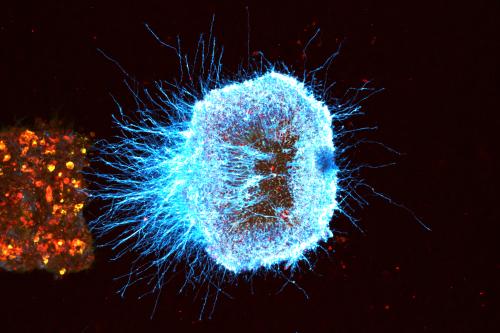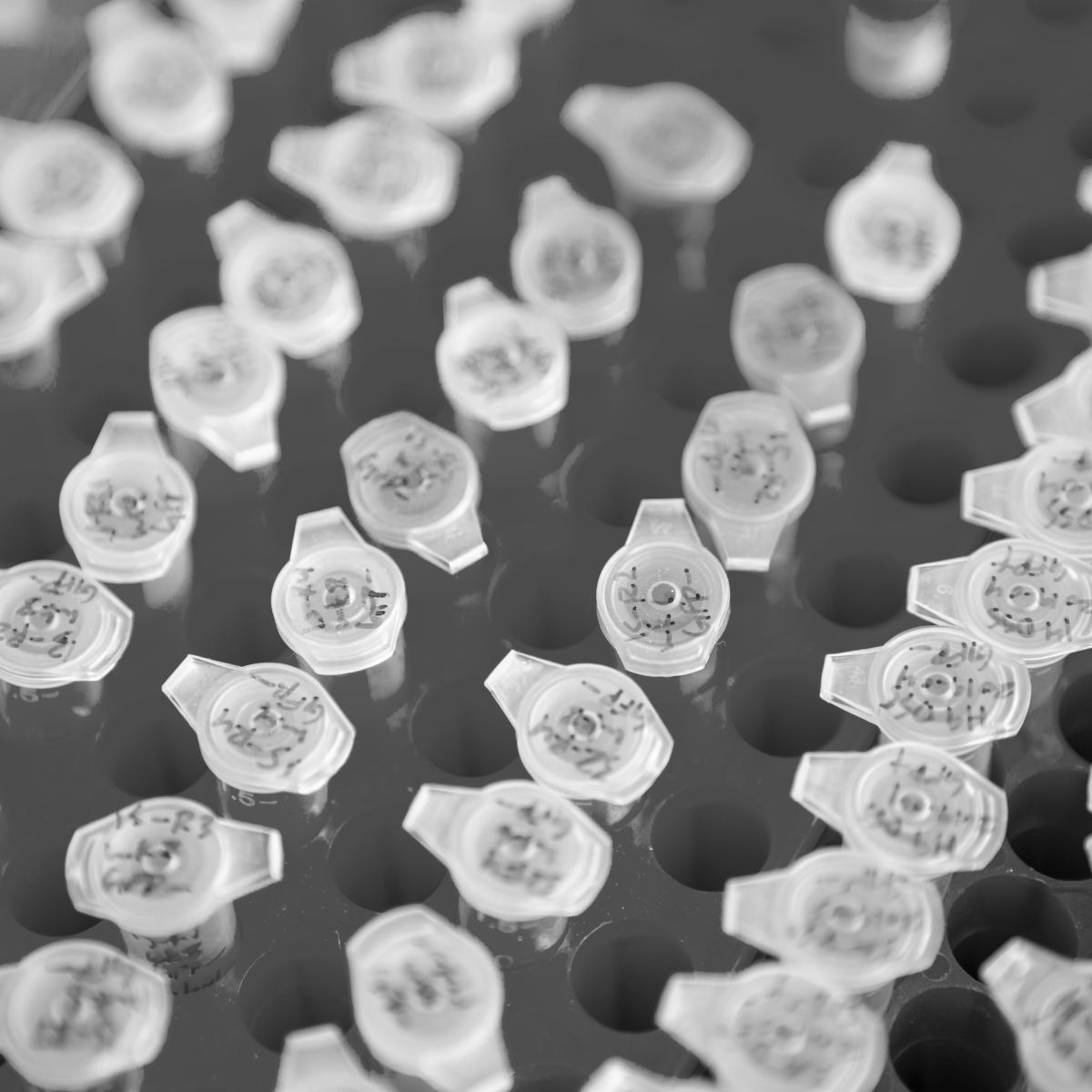

The early developmental stage of a multicellular organism, typically occurring after fertilization of an egg cell by a sperm cell.
Pluripotent stem cells Stem cells that can undergo self-renewal and differentiation to become any cell type found in the body. The two major types used in research are embryonic stem cells and induced pluripotent stem cells. Pluripotent stem cells Stem cells that can undergo self-renewal and differentiation to become any cell type found in the body. The two major types used in research are embryonic stem cells and induced pluripotent stem cells. that give rise to every cell type in the adult body. They are derived from the inner cell mass of a blastocyst An embryo in its very early stage, usually 5 to 6 days old, that has not implanted or attached to a uterus. It is made up of a small group of inner cells, which will develop into the embryo, and an outer layer of cells, which will develop into the placenta and amniotic membranes. blastocyst An embryo in its very early stage, usually 5 to 6 days old, that has not implanted or attached to a uterus. It is made up of a small group of inner cells, which will develop into the embryo, and an outer layer of cells, which will develop into the placenta and amniotic membranes..
A wide range of external and internal factors that impact human health. External exposures include chemical pollutants, radiation, diet and social interactions. Internal exposures involve stress, metabolism and the microbiome. Researchers study the exposome, which encompasses all exposures throughout life, to understand disease risk.
The field of study focused on the dynamic network of chemical compounds surrounding DNA Short for deoxyribonucleic acid, DNA is a double-stranded molecule that serves as the genetic blueprint for living organisms. Composed of four chemical bases, DNA encodes the instructions necessary for protein synthesis and governs the development, function, and inheritance of traits in an organism. DNA Short for deoxyribonucleic acid, DNA is a double-stranded molecule that serves as the genetic blueprint for living organisms. Composed of four chemical bases, DNA encodes the instructions necessary for protein synthesis and governs the development, function, and inheritance of traits in an organism. that can influence gene expression without altering the underlying DNA sequence. With modern DNA sequencing technology, scientists can measure epigenetic marks across an entire genome.
The network of chemical compounds surrounding DNA Short for deoxyribonucleic acid, DNA is a double-stranded molecule that serves as the genetic blueprint for living organisms. Composed of four chemical bases, DNA encodes the instructions necessary for protein synthesis and governs the development, function, and inheritance of traits in an organism. DNA Short for deoxyribonucleic acid, DNA is a double-stranded molecule that serves as the genetic blueprint for living organisms. Composed of four chemical bases, DNA encodes the instructions necessary for protein synthesis and governs the development, function, and inheritance of traits in an organism. that can influence gene expression without altering the underlying DNA sequence. Changes in the epigenome The network of chemical compounds surrounding DNA that can influence gene expression without altering the underlying DNA sequence. Changes in the epigenome can be influenced by the environment and can play a role in a person's health and disease. epigenome The network of chemical compounds surrounding DNA that can influence gene expression without altering the underlying DNA sequence. Changes in the epigenome can be influenced by the environment and can play a role in a person's health and disease. can be influenced by the environment and can play a role in a person's health and disease.
Particles naturally released by cells that carry proteins, nucleic acids and other molecules, surrounded by a double layer of lipid (fat) similar to a cell membrane. These vesicles plat a crucial role in intercellular communication, transferring essential molecules between cells.
